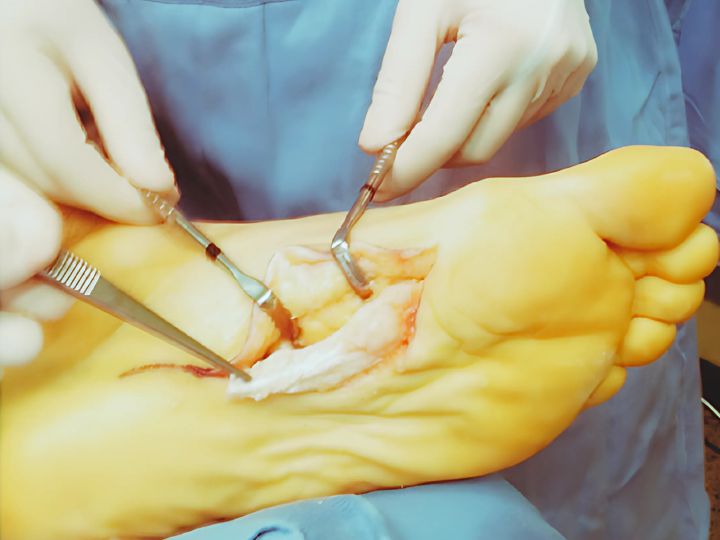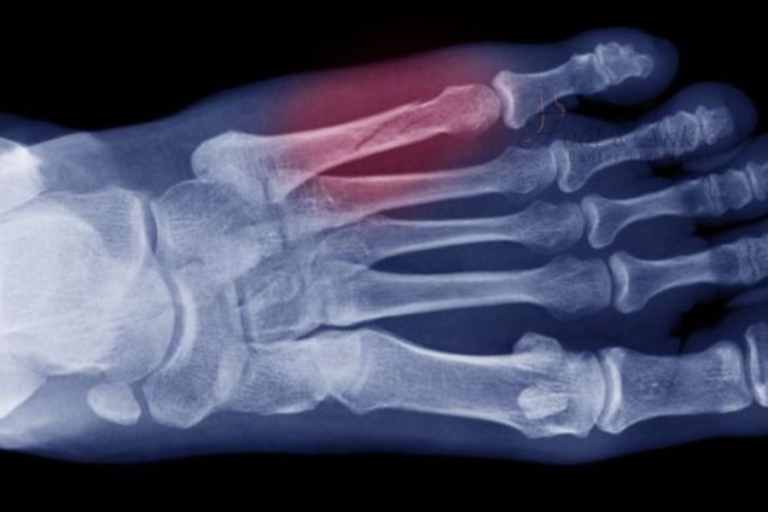If you’ve been diagnosed with a plantar fibroma and conservative treatments haven’t worked, surgery may be the next step. One of the most common questions we hear is, “Is plantar fibroma surgery painful?” Understanding what to expect before, during, and after surgery can help ease your concerns and guide your decision.
What Is Plantar Fibroma Surgery?
Plantar fibroma surgery involves removing a firm, non-cancerous lump from the arch of the foot that grows within the plantar fascia. This procedure is typically recommended when the fibroma causes ongoing pain, interferes with walking, or doesn’t respond to non-invasive treatments.
Is Plantar Fibroma Surgery Painful?
The short answer is: most patients experience manageable pain, especially with today’s advanced surgical techniques and post-operative care. Here’s a breakdown of what to expect:
During the Surgery
- The procedure is performed under local anesthesia, sedation, or general anesthesia, so you won’t feel pain during surgery.
- The surgeon makes an incision to remove the fibroma, and if needed, repairs the surrounding tissue.
After the Surgery
- Mild to moderate pain is common after surgery and is usually well-managed with prescribed medications.
- Pain typically peaks in the first 48–72 hours and improves steadily with rest and care.
- Swelling, tenderness, and bruising may be present, but your care team will guide you through pain control methods.
How Long Does Pain Last After Plantar Fibroma Surgery?
Recovery varies by patient, but here’s a general timeline:
- First 1–2 Weeks: You’ll likely experience swelling and soreness. Pain is controlled with rest, elevation, and medication.
- Weeks 3–6: Pain significantly decreases. You may begin light walking and physical therapy under guidance.
- After 6 Weeks: Many patients return to normal activity, although full healing can take 8–12 weeks.
Tips for Managing Pain After Surgery
To reduce discomfort and speed up healing:
- Follow all post-op instructions carefully
- Keep weight off the foot as directed
- Elevate the foot to reduce swelling
- Use ice packs (with a barrier) as recommended
- Take medications on schedule—not just when pain spikes
- Attend all follow-up visits and therapy sessions
When to Call Your Doctor
Pain is a normal part of healing, but you should contact your doctor if you notice:
- Severe or increasing pain not managed by medication
- Signs of infection (fever, redness, pus, warmth)
- Numbness or tingling in the foot
- Difficulty moving your toes
Alternatives to Surgery (If You’re Not Ready Yet)
If you’re nervous about pain, you’re not alone—and surgery isn’t the only option. Many patients benefit from:
- Custom orthotics to reduce pressure on the fibroma
- Corticosteroid injections to shrink the mass
- Shockwave therapy for pain relief and tissue healing
- Collagenase injections to break down the fibroma tissue
Is Plantar Fibroma Surgery Worth It?
For patients whose pain affects daily life, surgery can offer long-term relief and improved mobility. Although no surgery is completely painless, the majority of patients report manageable discomfort and high satisfaction after healing.
Why Choose a Specialist?
Choosing a qualified foot and ankle surgeon makes a major difference. At the Foot and Ankle Center of Arizona, Dr. Kris A. DiNucci, DPM, FACFAS, offers expert surgical care with a focus on minimizing discomfort and maximizing results.
With over 25 years of experience, our Scottsdale-based team uses advanced techniques and a compassionate approach to ensure the smoothest recovery possible.
Conclusion
So, is plantar fibroma surgery painful? While some discomfort is expected, the pain is typically well-controlled and short-lived—especially with skilled surgical care. For many, the relief from chronic foot pain far outweighs the temporary post-op discomfort.
Summary:
Plantar fibroma surgery typically results in moderate to mild pain that can be managed with medication and care. While pain is to be expected during recovery, most patients experience substantial relief and improved range of motion. This article outlines what to expect in advance and subsequently as well as offers some suggestions regarding managing pain and rapid healing.




